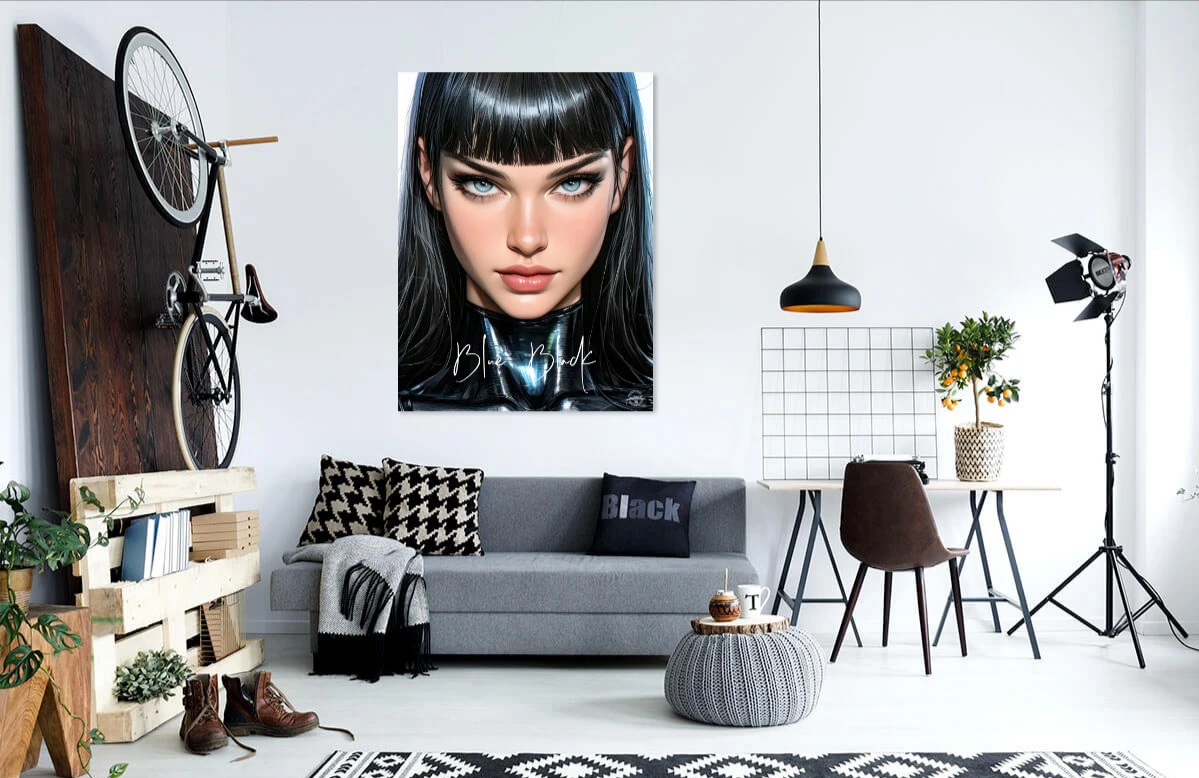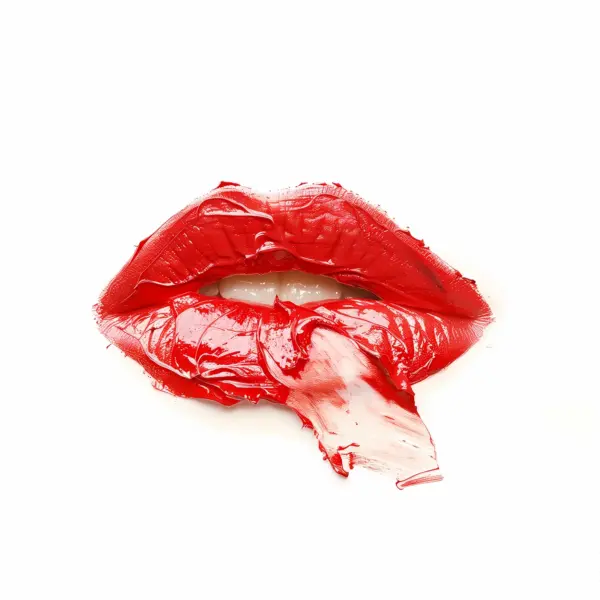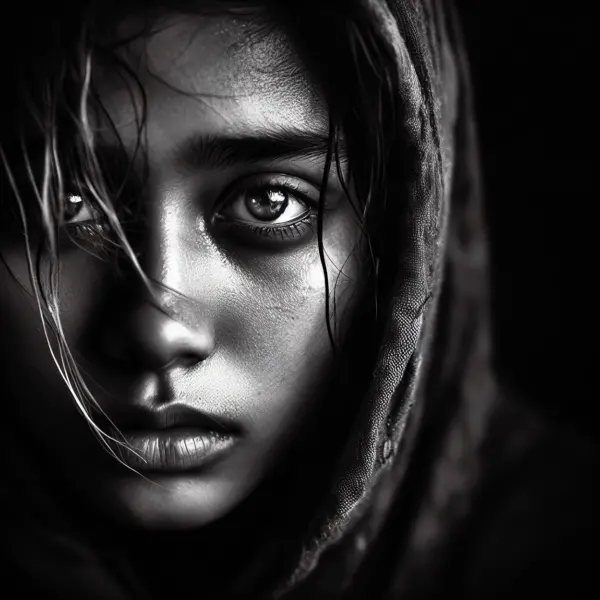Blue Black
The title Blue Black seems to refer not just to the palette but to a mood—a merging of cold isolation with dark, mysterious undertones. The hair is sleek, almost metallic in its sheen, cascading down the sides of the face in a manner that feels deliberate, as if every strand is placed to reinforce the sharpness of the persona being presented. There is a smoothness to the black, almost as if the figure is sculpted, more a creation of precision than of nature. The black material she wears, too, contributes to this mechanical, synthetic quality. It hugs her form, reflecting light in such a way that it seems almost liquid, reinforcing the idea that this character is fluid, able to shift between forms, perhaps even identities.
Her skin is flawless, almost porcelain in texture, with a smoothness that could either be a testament to an idealized beauty or a chilling hint that this figure is more artificial than real. The subtle gloss on her lips, the barely perceptible flush of her cheeks, and the delicate arch of her brows all point to meticulous design. There is nothing out of place, which lends the figure an unsettling perfection, as though this beauty was not born but crafted. The line between human and machine, between organic and synthetic, is blurred.
And then there is the posture of the subject. While the image focuses primarily on the upper portion of her face, the rigid, upright stance that is implied through the visible sections of her shoulders and neck suggests a character that is confident, possibly even dominant. She is in control—of herself, of her surroundings, and perhaps, even of the viewer. The tight, almost constricting material she wears clings to her in a way that feels both empowering and suffocating, as though she is bound by the very armor that gives her strength.
This duality—of empowerment and imprisonment, of cold beauty and hidden emotion, of human and synthetic—is the central narrative thread of the piece. The viewer is left to wonder: who is she? Is she a warrior, a sentinel of a distant, dystopian future? Or is she an avatar, a projection of an idealized form, someone who exists more in the digital realm than in the physical one? The title Blue Black echoes this ambiguity. Blue can symbolize calm, tranquility, and distance, while black speaks of mystery, the unknown, and perhaps even danger.
One interpretation could be that this figure represents the modern human experience in the digital age. The blue of her eyes, sharp and clear, might symbolize the clarity with which we see the world through the lens of technology, yet the black that surrounds her—her hair, her attire—serves as a reminder that there is much we do not see, much that remains shrouded in mystery. She is both a creation and a creator, navigating a world where boundaries between the virtual and the real are increasingly blurred.
The composition of the piece also draws attention to the meticulous craftsmanship of the artist. The brushwork, or in this case, the digital rendering, emphasizes the contrast between light and shadow, hard and soft, warmth and cold. The use of reflective surfaces, particularly in the figure’s clothing, draws attention to the way light interacts with her form, further adding to the sense of her being more than human. She is, in many ways, a reflection of the modern world—cold, beautiful, precise, and distant.
But beneath the perfection, beneath the flawless exterior, there is a subtle tension, an unspoken narrative that the viewer is invited to explore. Perhaps the subject herself is unaware of this tension, or perhaps she is in on the secret. Her eyes, though cold, seem to hold a flicker of life, a suggestion that behind the facade of perfection, there is something more—a person, a story, a soul.
Ultimately, Blue Black is a work that challenges the viewer to confront their own perceptions of beauty, perfection, and humanity. It raises questions about the roles we play, the masks we wear, and the personas we create in order to navigate a world that demands both precision and detachment. Is this figure a heroine or a prisoner of her own image? Is she more human or more machine? The answers, like the figure herself, remain tantalizingly out of reach, leaving the viewer with a lingering sense of awe, curiosity, and perhaps even unease.
Blue Black is not just a portrait of a woman; it is a portrait of a world where the lines between self and other, human and machine, reality and artifice, are constantly shifting. It is a world we recognize all too well—a world that, like the figure herself, is beautiful, enigmatic, and ever so slightly unsettling.




 70-140cm (27.5″≈55″) Printable
70-140cm (27.5″≈55″) Printable



